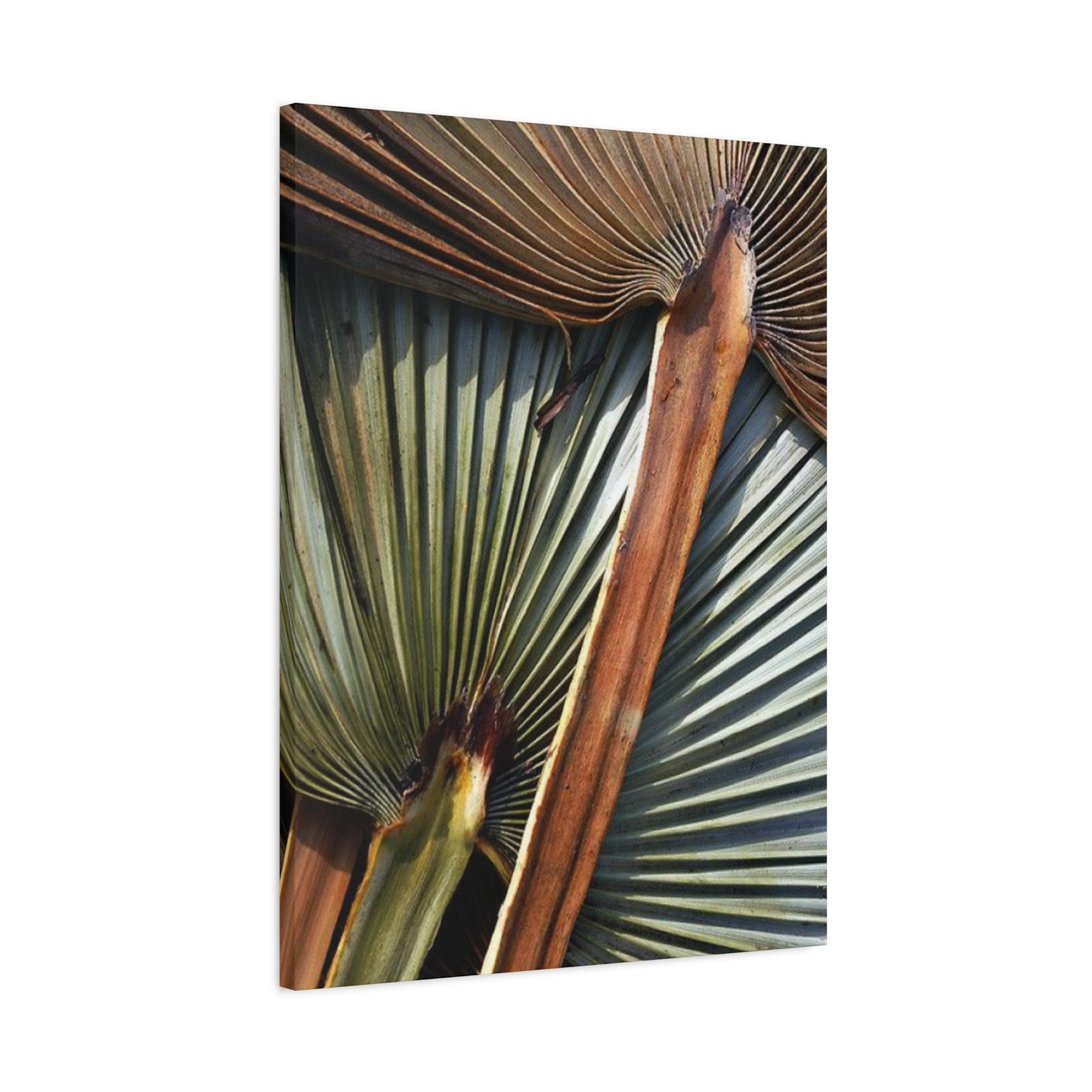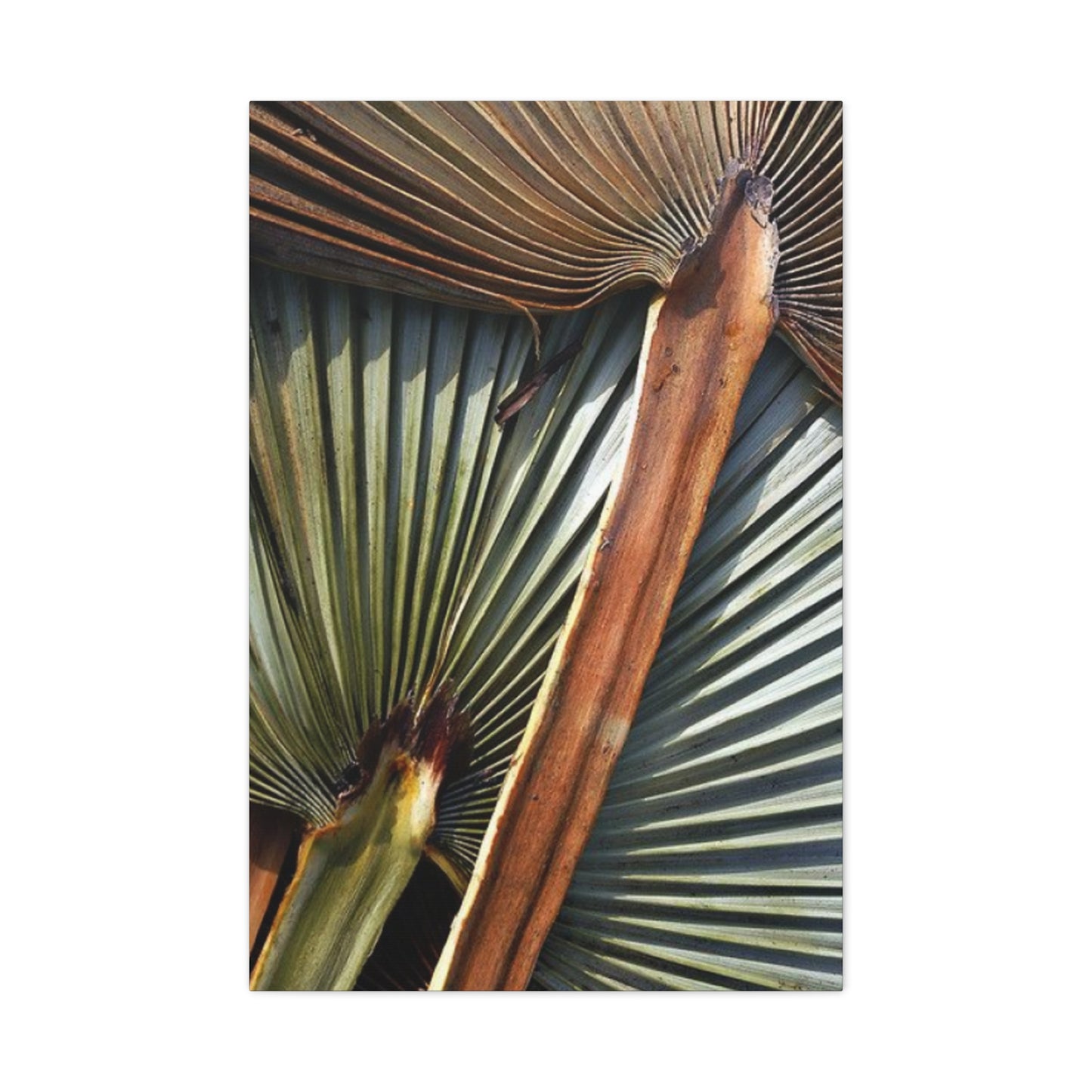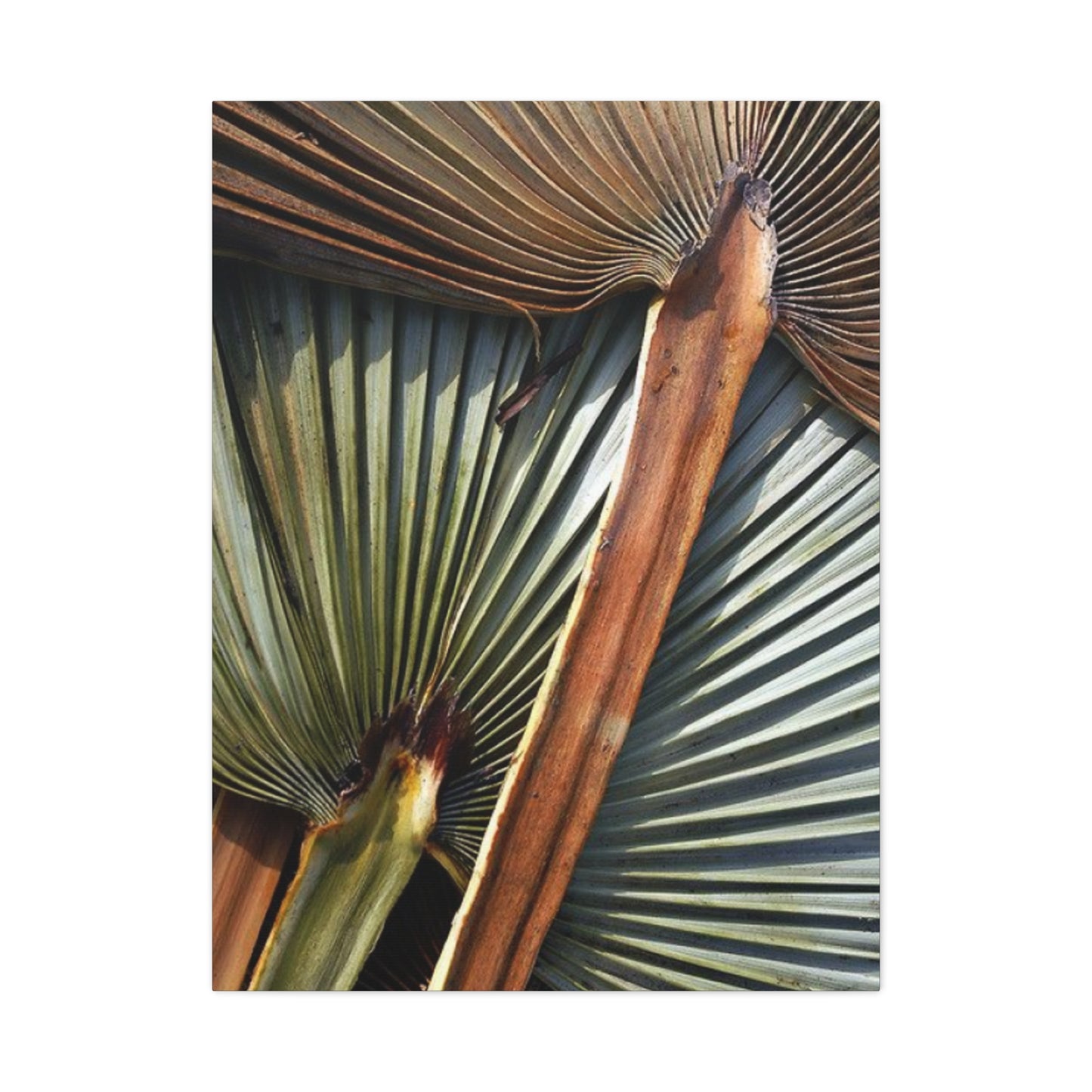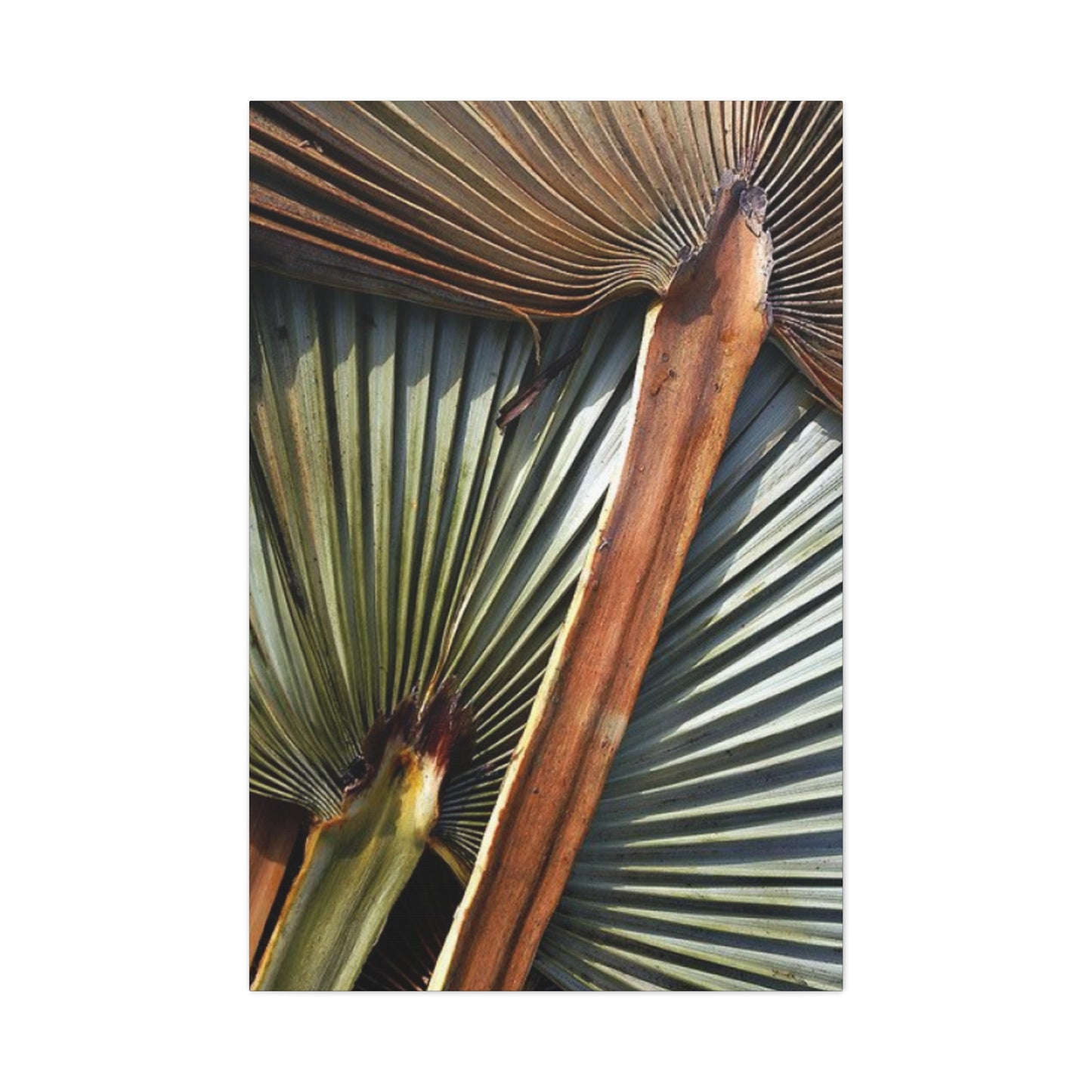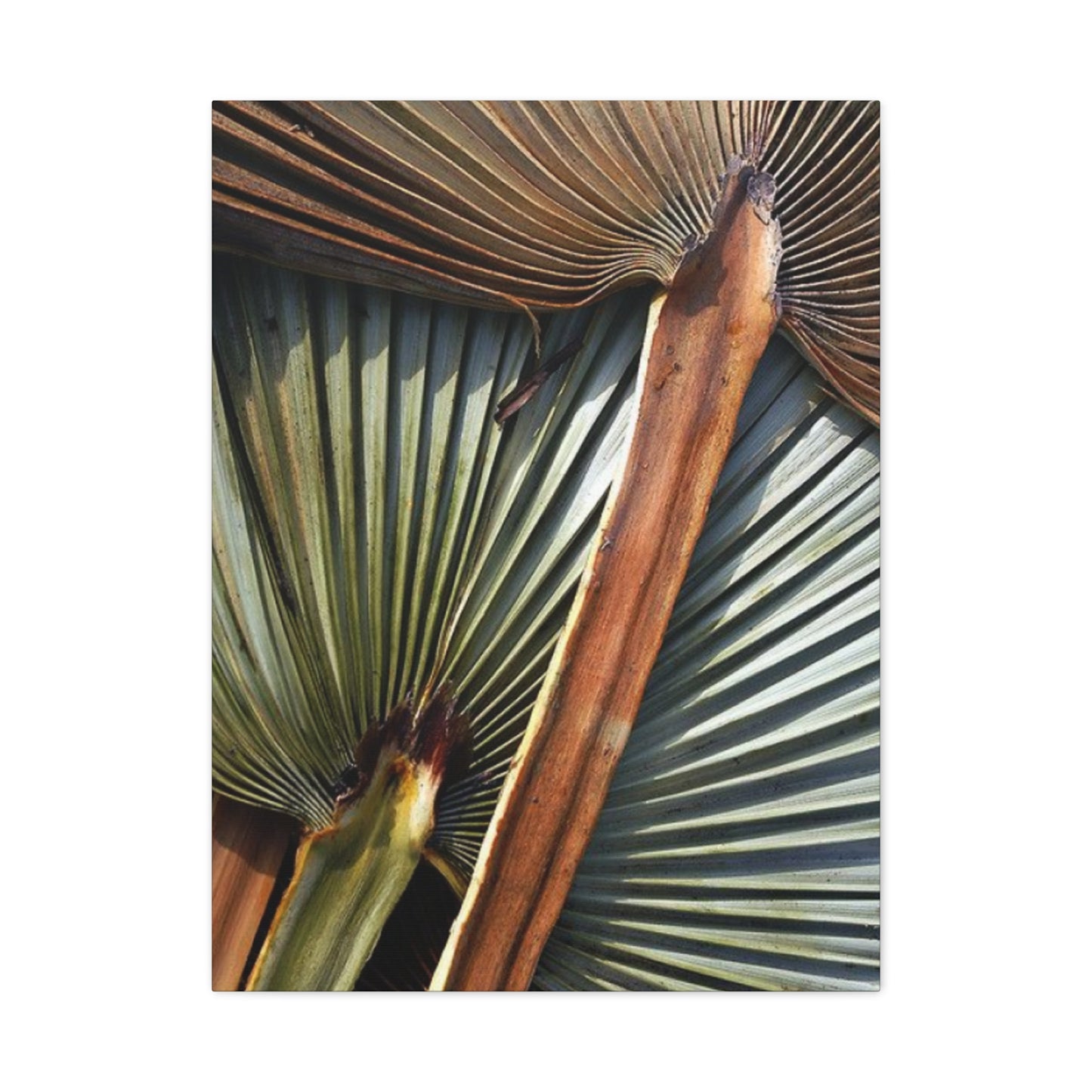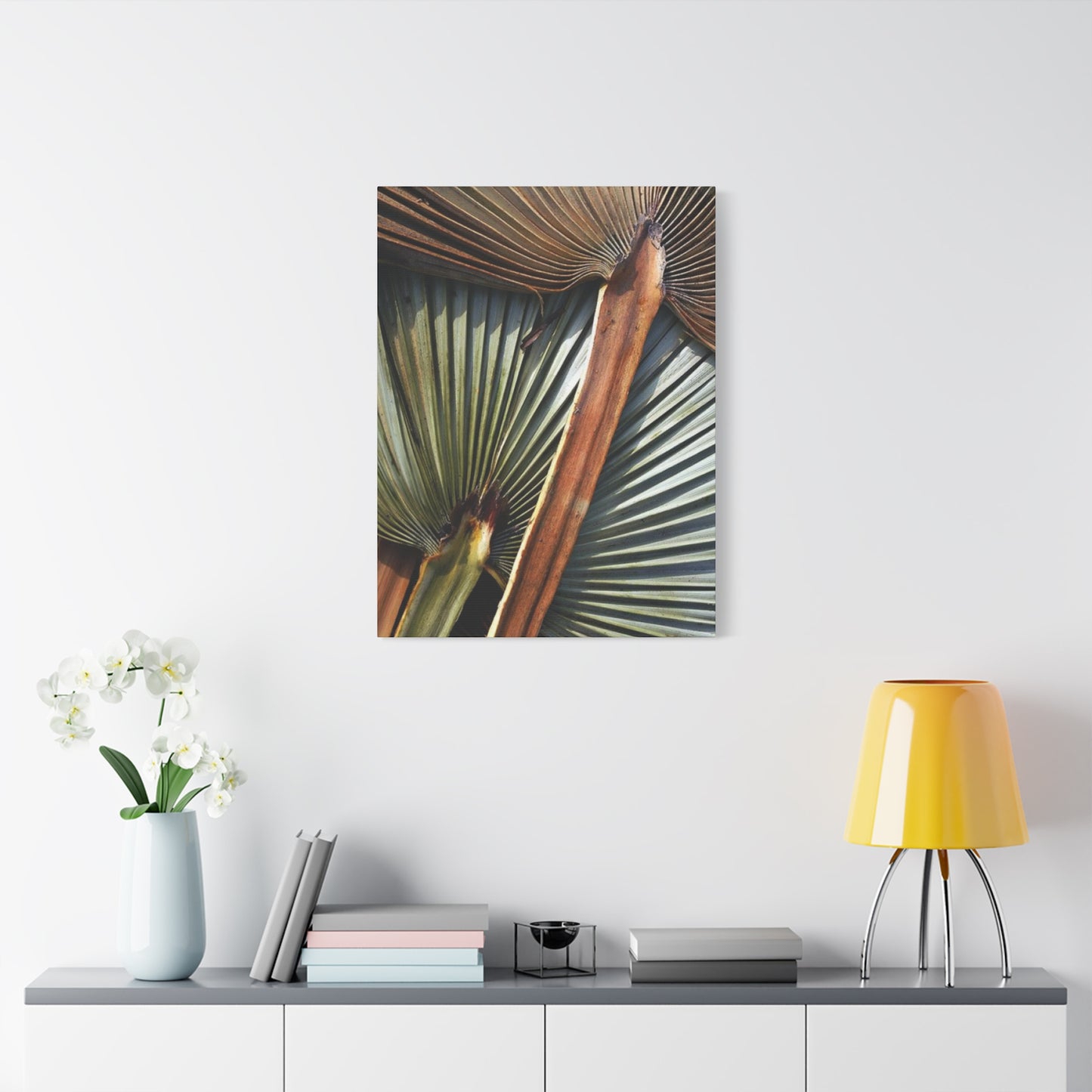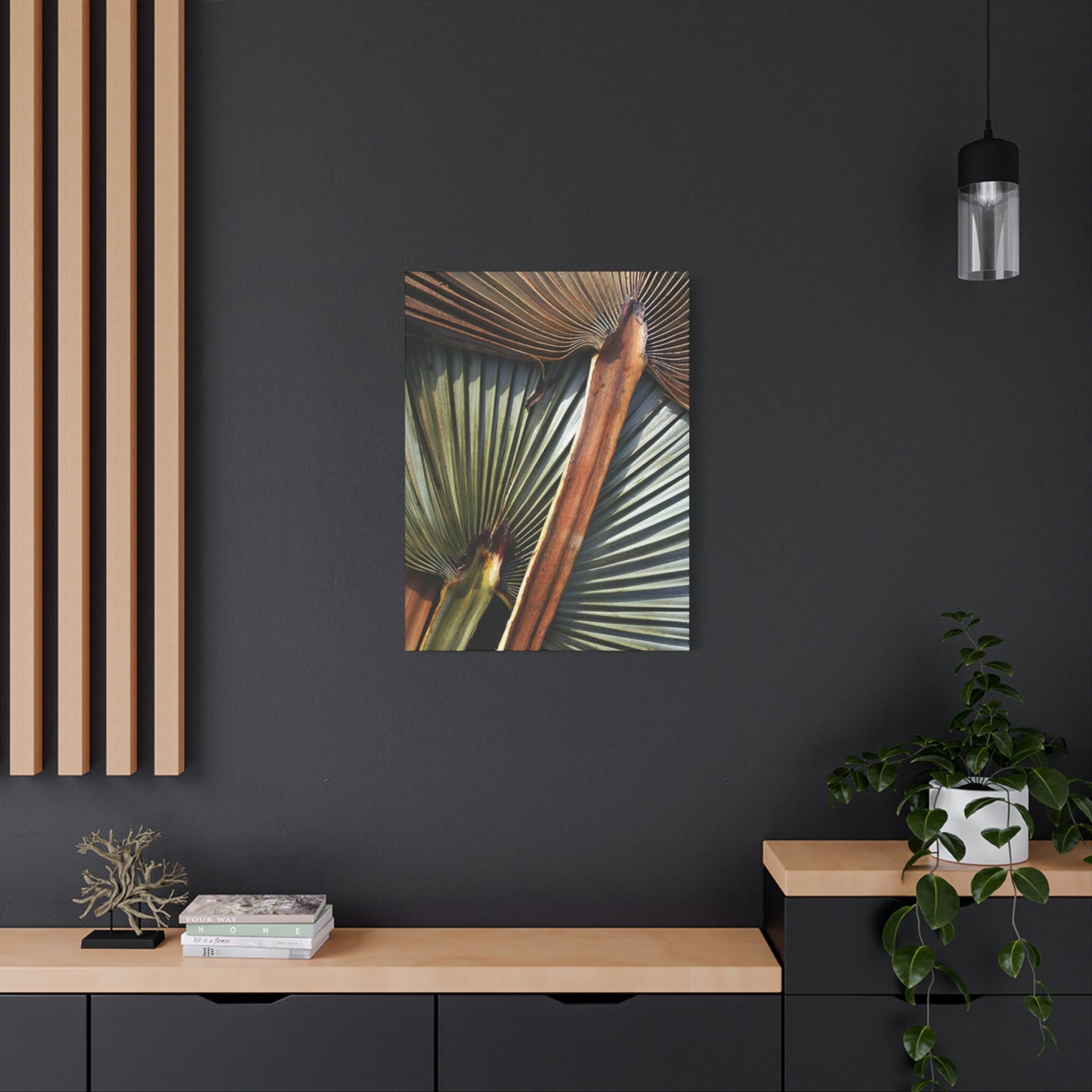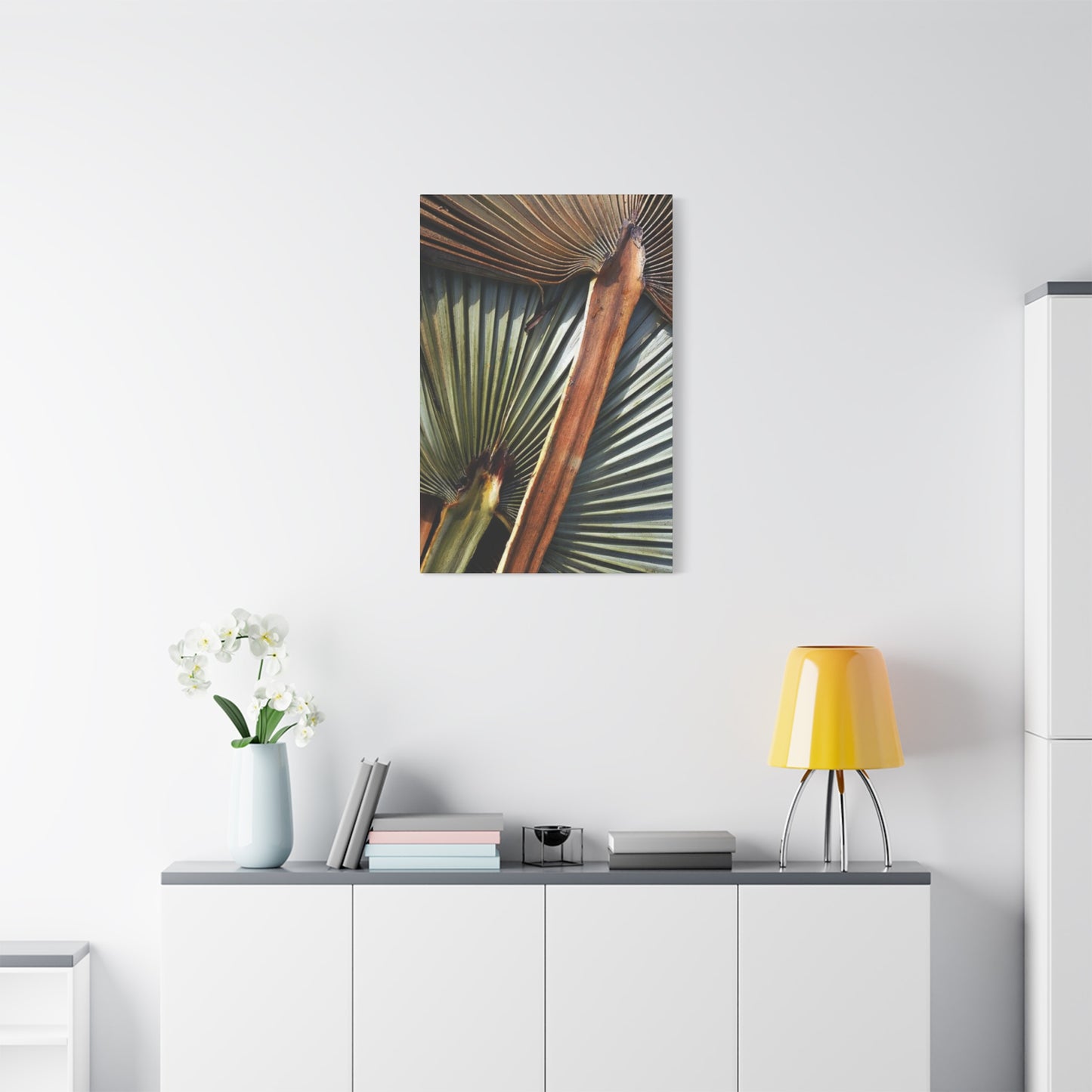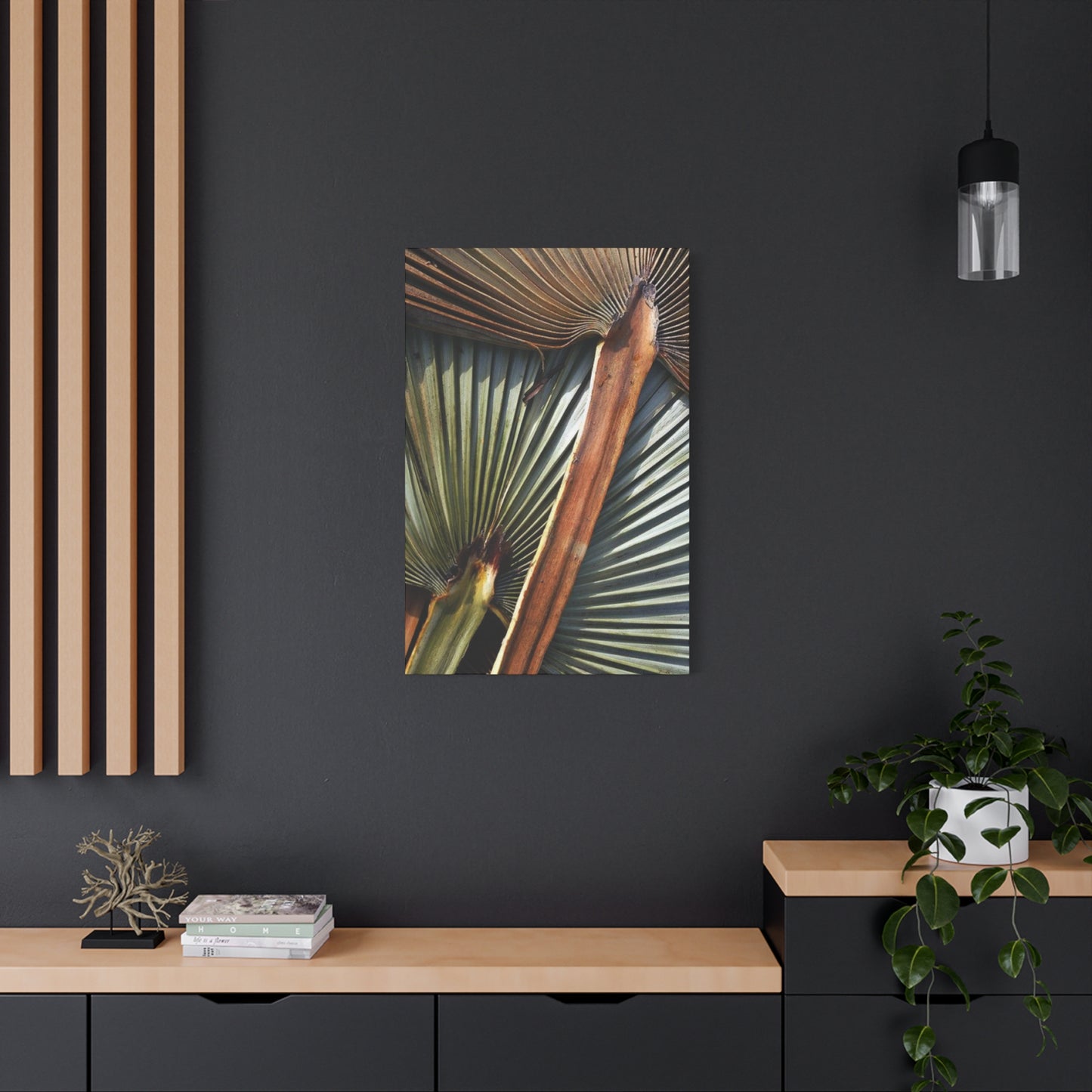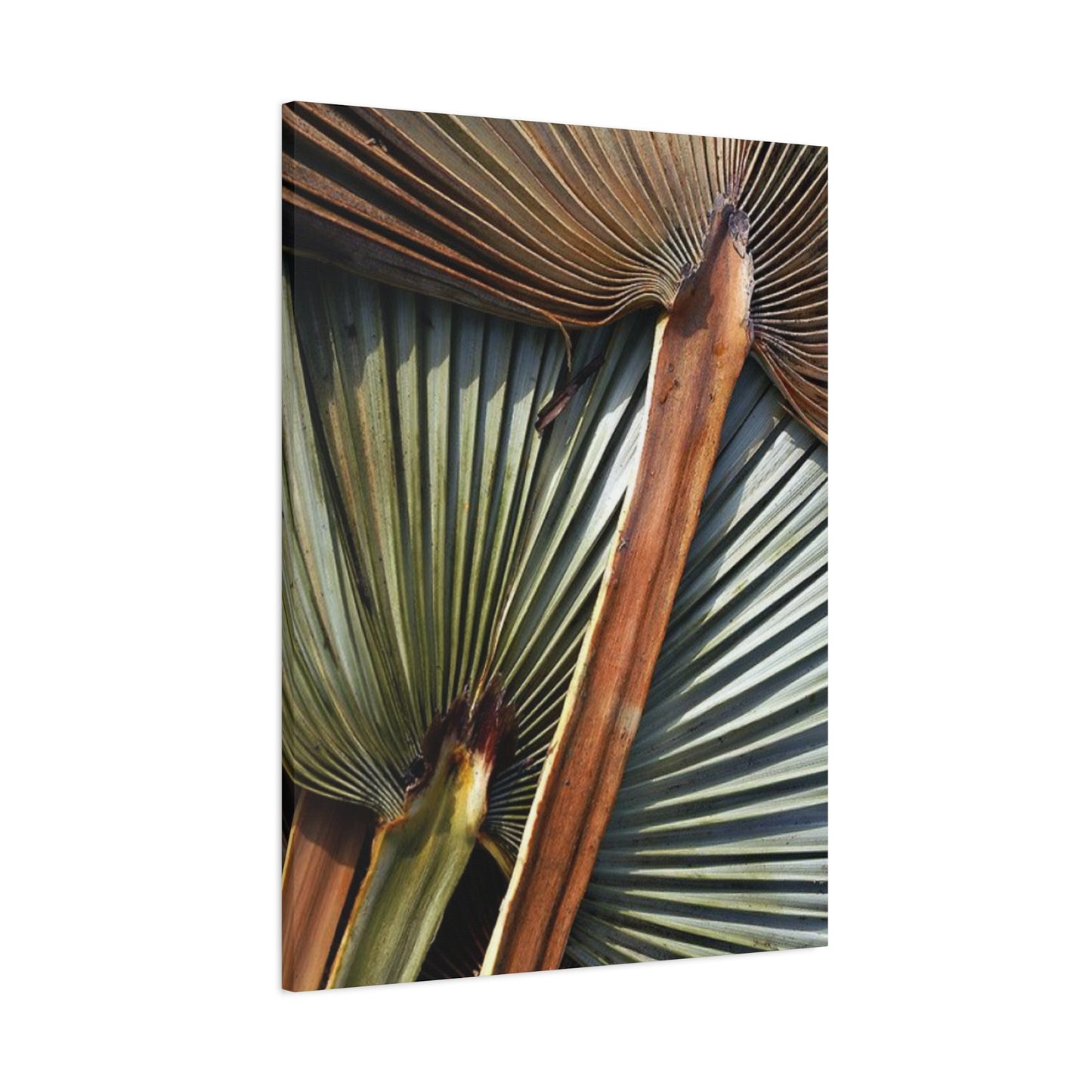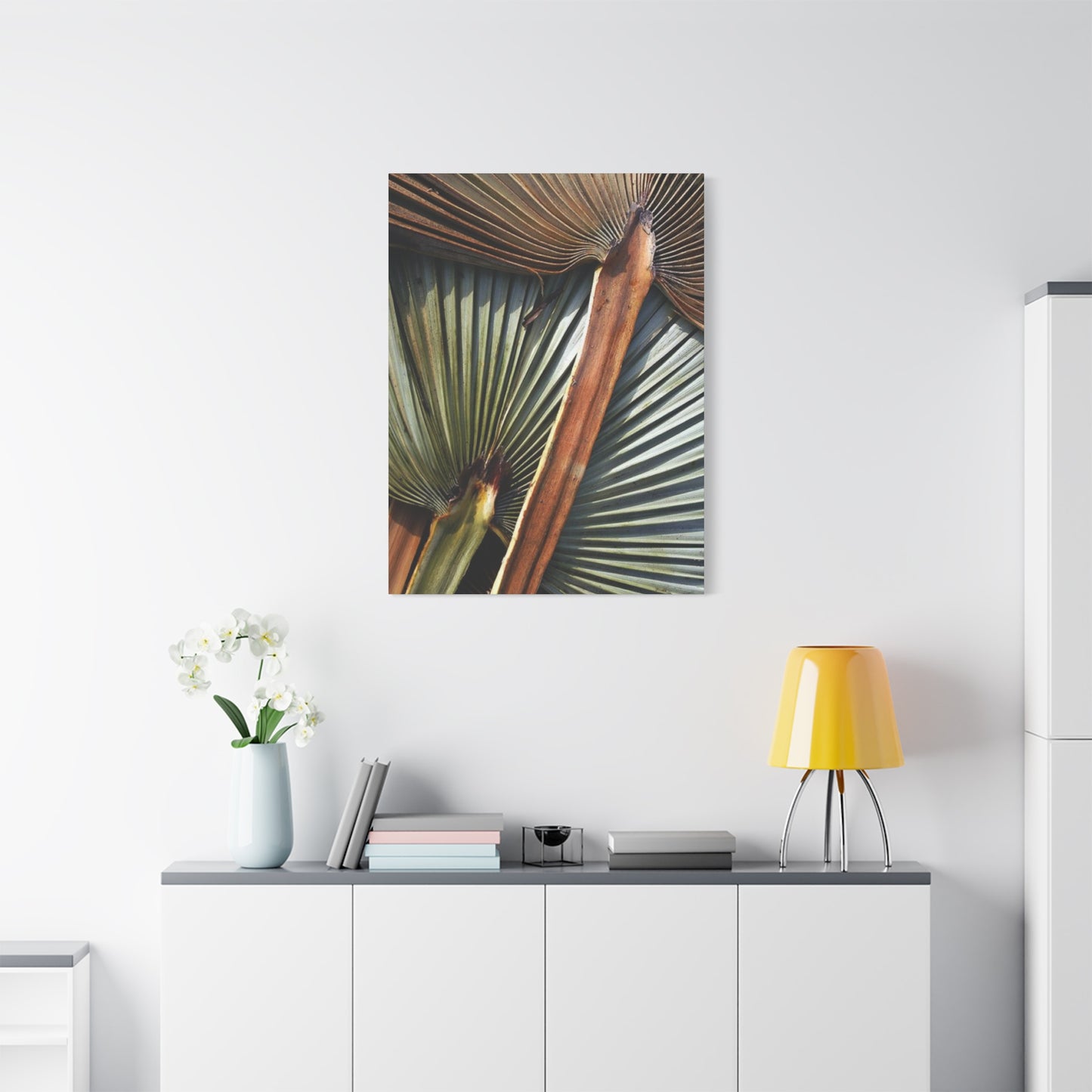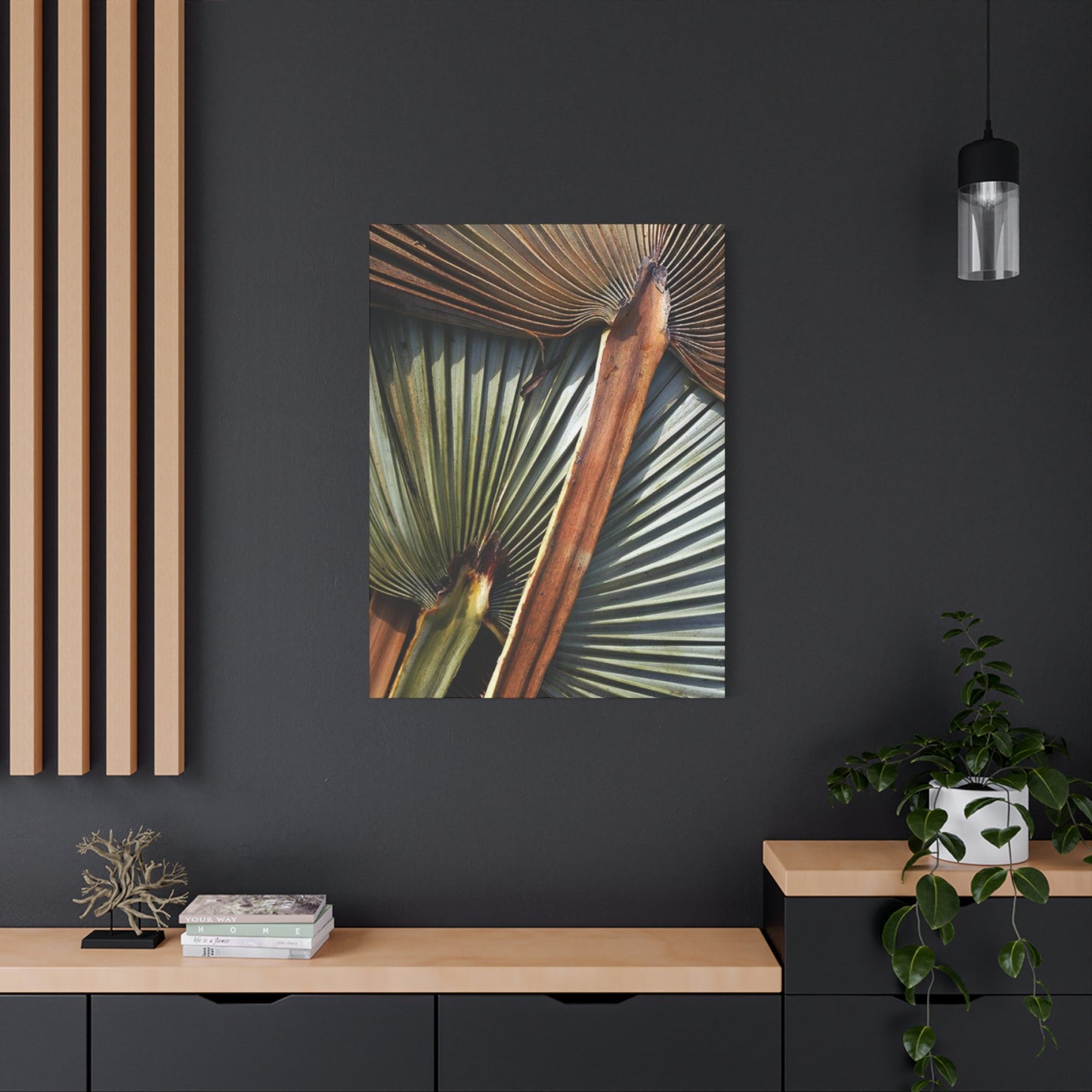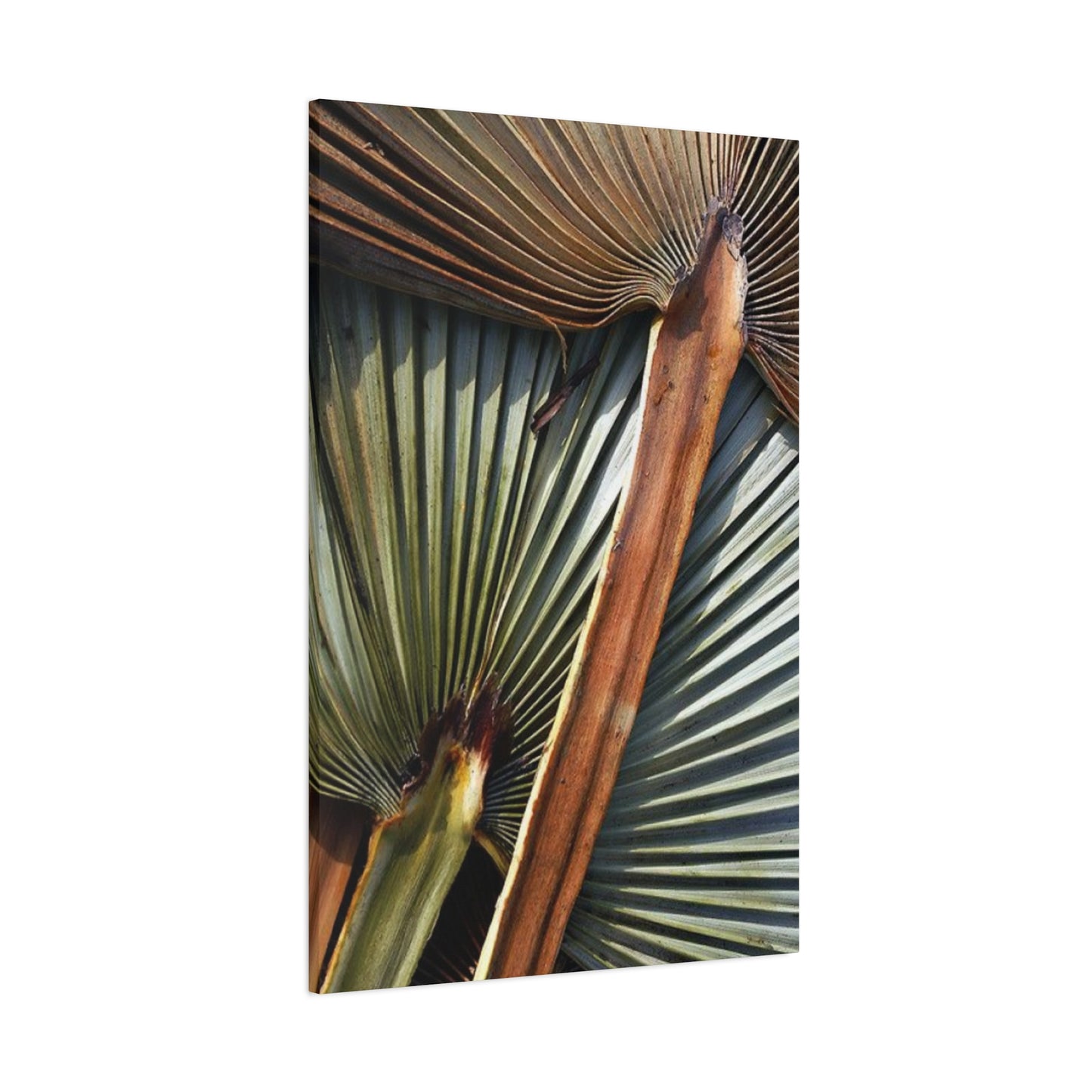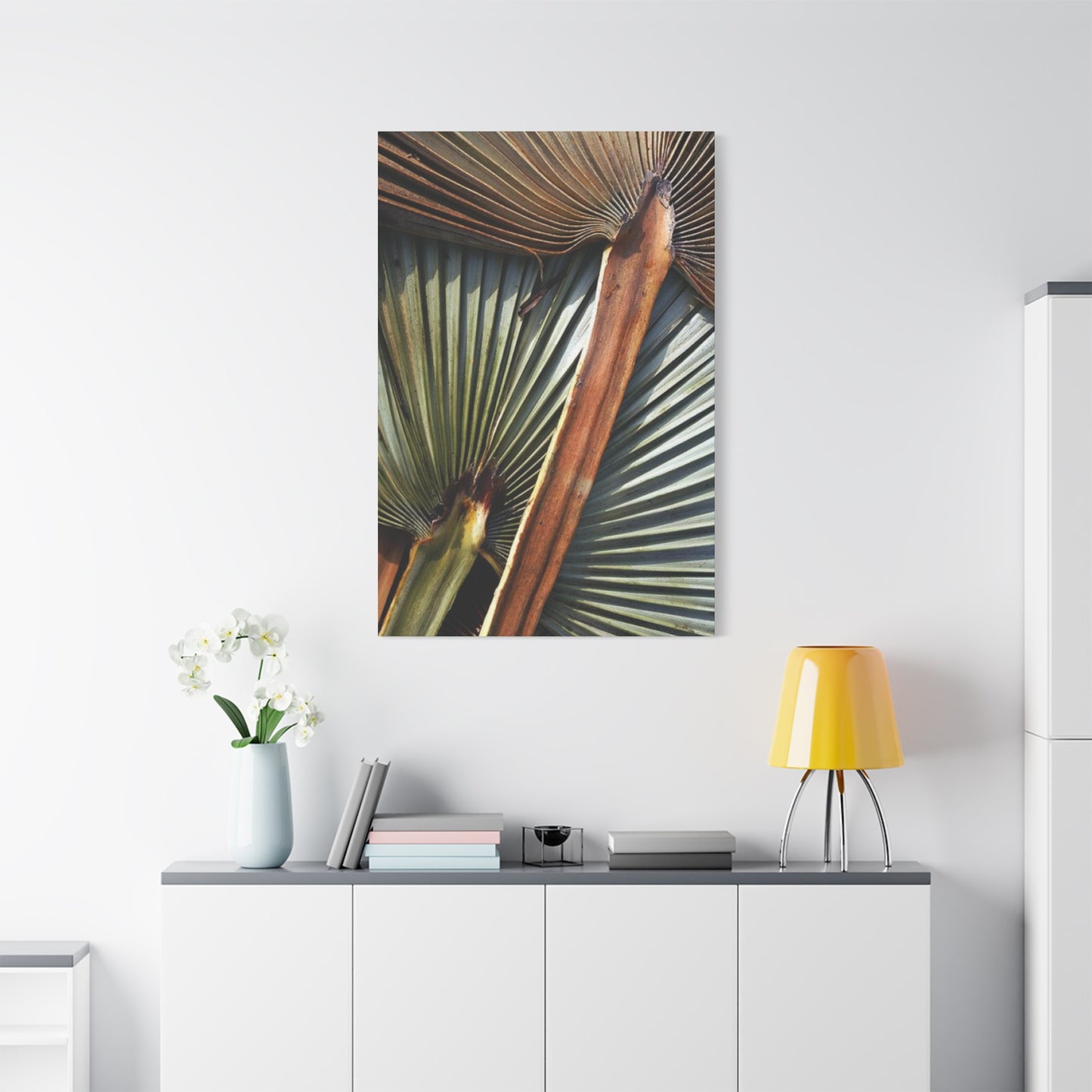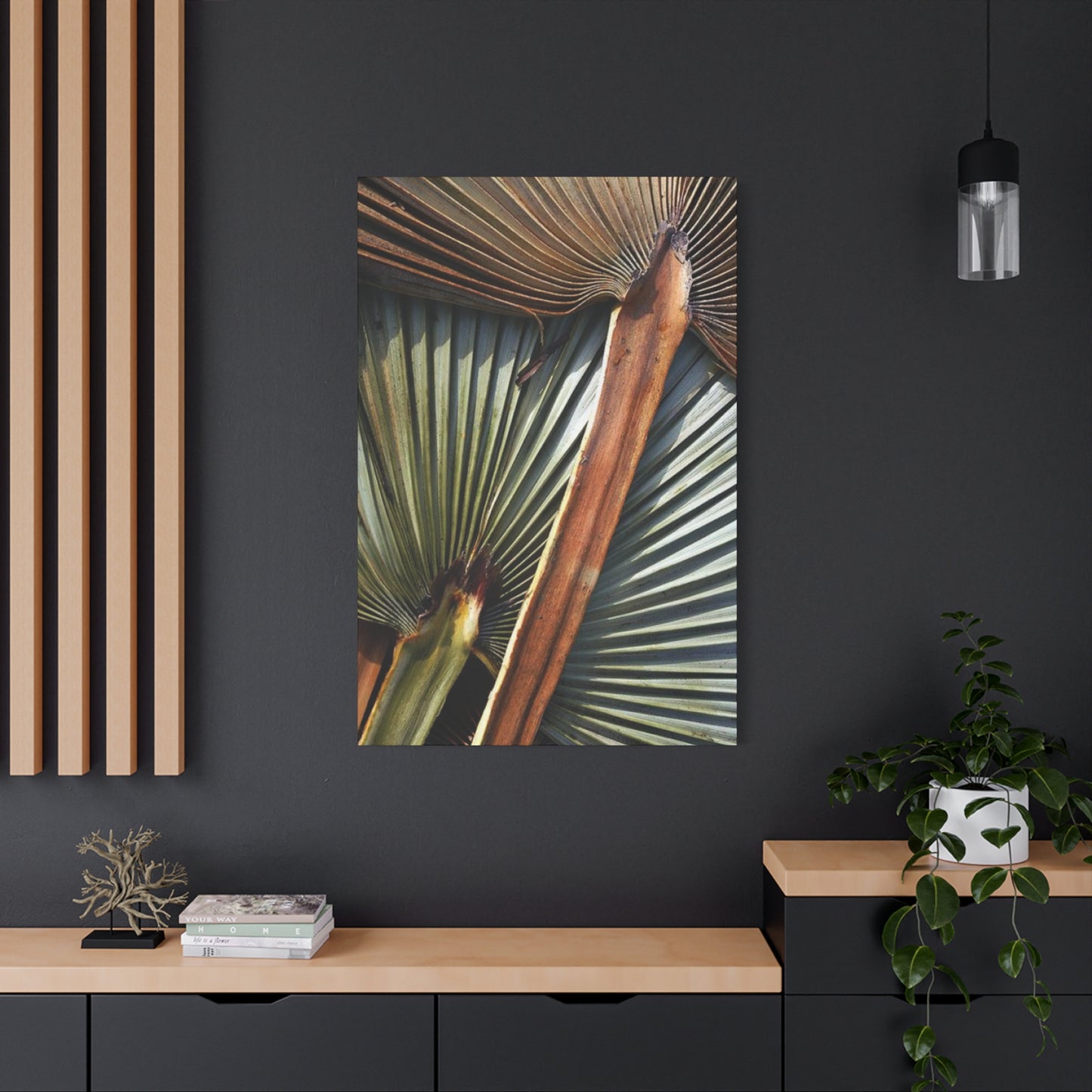Tropical Sophistication: Styling Interiors with Palm Tree Leaves Close-Up Wall Art
The world of interior design has witnessed a remarkable surge in the popularity of botanical artwork, particularly pieces featuring intricate palm foliage imagery. These stunning visual elements bring the tranquility of tropical landscapes directly into residential and commercial spaces, creating atmospheres that resonate with natural beauty and contemporary sophistication. The appeal of palm-themed wall decorations lies in their versatility, seamlessly complementing various design philosophies while maintaining a timeless aesthetic that transcends fleeting trends.
When considering the incorporation of botanical elements into your living environment, palm-related artwork stands out as an exceptional choice. The organic patterns, varied textures, and inherent sense of movement captured in close-up photography of these tropical plants offer endless possibilities for transforming ordinary walls into captivating focal points. Whether you're seeking to establish a coastal-inspired sanctuary, a modern minimalist retreat, or a bohemian haven filled with natural textures, palm foliage imagery provides the perfect foundation for achieving your design vision.
The following comprehensive exploration delves into numerous aspects of incorporating palm-themed wall decorations into your spaces. From understanding the visual impact of textured tropical imagery to mastering the art of placement and styling, this detailed resource will equip you with the knowledge needed to make informed decisions about selecting and displaying these beautiful pieces. Each section provides practical insights, creative inspiration, and actionable recommendations to help you create environments that reflect your personal style while embracing the serene beauty of nature.
Capturing Tropical Essence Through Textured Canvas Imagery
The artistry involved in creating canvas prints featuring tropical palm foliage represents a fascinating intersection of photography, digital enhancement, and printing technology. These pieces typically showcase the intricate details of palm fronds, highlighting the natural patterns created by the leaves' parallel veins, the subtle variations in coloration, and the play of light and shadow across organic surfaces. The textured quality of these images brings depth and dimension to flat wall surfaces, creating visual interest that draws the eye and invites closer inspection.
High-quality canvas prints of tropical foliage capture more than just the physical appearance of palm leaves; they encapsulate the essence of tropical environments. The slight variations in green tones, from deep emerald to bright lime, reflect the diversity found in natural settings. The shadows cast by overlapping fronds create layers of visual complexity, while highlights reveal the delicate structure of each leaf. This combination of elements results in artwork that feels alive and dynamic, constantly revealing new details as lighting conditions change throughout the day.
The process of selecting textured tropical canvas prints requires attention to several important factors. Print quality significantly impacts the overall appearance and longevity of the artwork. Professional-grade printing techniques ensure color accuracy, proper saturation levels, and resistance to fading over time. The canvas material itself should be substantial enough to maintain its shape without sagging, yet flexible enough to be stretched tightly over the frame. Gallery-wrap construction, where the image extends around the edges of the frame, creates a polished, professional appearance that eliminates the need for traditional framing.
When evaluating tropical palm canvas prints, consider the composition and perspective of the photograph. Close-up shots that fill the frame with overlapping fronds create immersive experiences, making viewers feel as though they're standing beneath a palm canopy. Angled perspectives add dynamism and movement, while straight-on compositions offer a more structured, geometric appearance. The choice between these approaches depends on the desired emotional response and the existing design elements in your space.
The versatility of textured tropical imagery extends to various room types and purposes. In living areas, these pieces can serve as conversation starters, drawing guests into discussions about travel, nature, or design preferences. In bedrooms, they promote relaxation and connection with the natural world, supporting restful sleep and peaceful mornings. Office environments benefit from the stress-reducing qualities associated with natural imagery, potentially improving focus and productivity. Even bathrooms and hallways can be transformed with strategically placed tropical canvas prints, turning transitional spaces into opportunities for visual enjoyment.
Showcasing Intricate Natural Elements in Wall Decorations
The beauty of focusing on detailed natural elements lies in the opportunity to appreciate aspects of plant life that often go unnoticed in everyday encounters. When palm foliage is photographed in extreme close-up, the resulting images reveal textures, patterns, and structures that transform familiar plants into abstract compositions. These detailed representations celebrate the complexity of botanical forms, highlighting the mathematical precision of leaf arrangements, the subtle gradations of color across individual fronds, and the intricate network of veins that provide structural support and nutrient distribution.
Incorporating detailed nature-focused decorations into your space creates opportunities for daily moments of observation and appreciation. Unlike more straightforward landscape photography, close-up botanical imagery invites extended viewing, rewarding patient observers with new discoveries each time they engage with the artwork. The interplay of light and shadow across leaf surfaces, the delicate texture of leaf edges, and the geometric patterns formed by repeating elements all contribute to a rich visual experience that remains engaging over time.
The psychological benefits of surrounding yourself with natural imagery have been extensively documented in environmental psychology research. Exposure to representations of nature, even in photographic or artistic form, can reduce stress levels, lower blood pressure, and improve overall mood. Detailed botanical artwork specifically engages the mind in a gentle, meditative way, providing a respite from the constant stimulation of digital screens and urban environments. This makes palm foliage decorations particularly valuable in modern homes, where opportunities for direct contact with nature may be limited.
When selecting detailed natural element decorations, pay attention to the level of abstraction in the composition. Some images maintain clear representational qualities, allowing viewers to immediately identify the subject as palm leaves. Others push further into abstraction, where patterns and textures become the primary focus, and the botanical origin of the image becomes secondary. Both approaches have merit, and the choice depends on your aesthetic preferences and the overall design direction of your space.
Incorporating Verdant Color Schemes Through Wall-Mounted Prints
The strategic use of verdant color schemes in interior design brings vitality, freshness, and natural beauty to living spaces. Wall-mounted prints featuring palm foliage provide an excellent vehicle for introducing and reinforcing green color palettes, offering flexibility in tone, intensity, and distribution of color throughout a room. Unlike painted walls that commit entire surfaces to a single hue, botanical prints allow for more nuanced color introduction, with variations in shade and the interplay of green with other natural tones creating visual complexity and interest.
Green exists across a remarkable spectrum, from the deepest forest tones to the brightest lime shades, and palm foliage photography captures this diversity beautifully. When selecting prints to support verdant color schemes, consider the existing colors in your space and the mood you wish to establish. Deeper, more saturated greens create richness and drama, working well in formal spaces or rooms where you want to establish a cocoon-like atmosphere. Mid-tone greens offer versatility and accessibility, easily complementing a wide range of design styles and color combinations. Lighter, brighter greens introduce energy and freshness, particularly effective in spaces where you want to promote alertness and activity.
The relationship between green botanical prints and other colors in your space deserves careful attention. Green pairs beautifully with neutral tones—whites, grays, beiges, and taupes—creating sophisticated, timeless combinations that work in virtually any setting. The addition of natural wood tones introduces warmth and reinforces the botanical theme, creating cohesive, nature-inspired environments. For those seeking more adventurous combinations, green and coral or pink create tropical, resort-inspired palettes, while green and navy evoke classic, preppy aesthetics. Green and gold combinations suggest luxury and elegance, particularly when metallic accents are incorporated through frames or accessories.
Layering different shades of green through multiple botanical prints can create depth and visual interest without introducing competing color families. A collection of palm foliage prints featuring various green tones—from sage to emerald to olive—provides richness while maintaining color harmony. This monochromatic approach feels sophisticated and intentional, demonstrating design confidence and creating spaces that feel cohesive and well-planned. The variation in tone prevents monotony while the consistent color family ensures visual unity.
Evoking Shoreline Tranquility Through Botanical Canvas Decorations
The aesthetic connection between tropical palm imagery and coastal environments creates powerful opportunities for evoking shoreline tranquility in interior spaces, even those located far from actual beaches. Palm trees are iconic elements of coastal landscapes, immediately conjuring mental images of ocean breezes, sandy shores, and relaxed, vacation-inspired lifestyles. By incorporating palm botanical canvas decorations into your design scheme, you can capture these associations and translate them into tangible atmospheric effects within your home.
The psychology behind coastal design aesthetics centers on relaxation, escape, and connection to nature's rhythms. Beaches represent liminal spaces—boundaries between land and sea, civilization and nature, work and leisure. This in-between quality creates psychological permission to let go of stress and embrace more relaxed states of being. Botanical canvas decorations featuring palm foliage tap into these associations, providing visual cues that encourage mental and emotional shifts toward calmness and presence. Even a brief glance at such imagery can trigger memories of peaceful beach experiences, producing measurable reductions in stress responses.
Building a coastal-inspired design scheme around palm botanical artwork involves selecting complementary colors, textures, and materials that reinforce beachy associations. Color palettes typically include whites and creams reminiscent of sand, blues and aquas suggesting ocean waters, and the natural greens and browns of tropical vegetation. Textures play an equally important role—weathered woods, natural fibers like jute and rattan, smooth stones, and textured linens all evoke coastal environments. When palm botanical canvas decorations are combined with these supporting elements, the cumulative effect transports inhabitants to beachside locations, if only psychologically.
The style of palm imagery selected significantly impacts the coastal aesthetic being created. Bright, sun-drenched photographs with high contrast and vivid colors suggest tropical beach destinations—think Caribbean islands or Pacific resorts—where intense sunlight and vibrant vegetation dominate the landscape. Softer, more muted images with gentle lighting evoke temperate coastal regions where fog, overcast skies, and subtle color variations create quieter, more contemplative atmospheres. Understanding these distinctions helps in selecting artwork that aligns with your specific vision of coastal tranquility.
Placement strategies for coastal-inspired palm botanical decorations should consider the narrative flow of your space. In entryways, such artwork sets the tone immediately upon entering, signaling the relaxed, nature-connected atmosphere that permeates the home. In living areas, palm decorations can create visual anchors around which other coastal elements are arranged. Bedrooms benefit particularly from coastal-inspired botanical artwork, as the relaxation associations support the room's primary function of rest and restoration. Even bathrooms can embrace coastal themes, with palm imagery creating spa-like atmospheres reminiscent of resort experiences.
Contemporary Botanical Expression in Wall-Mounted Art
Contemporary design aesthetics embrace clean lines, minimal ornamentation, and focus on essential forms, making botanical subjects ideal for modern artistic expression. Wall-mounted art featuring plant life, particularly detailed palm imagery, bridges the gap between traditional nature painting and modern design sensibilities. These pieces offer organic forms and natural beauty while maintaining the simplicity and clarity valued in contemporary interiors. The result is artwork that feels both timeless and current, sophisticated yet accessible.
The evolution of botanical art has accelerated in recent decades, moving beyond scientific illustration and traditional landscape painting to embrace more varied approaches. Contemporary botanical expression includes extreme close-ups that border on abstraction, unconventional angles that challenge familiar perspectives, and digital enhancements that intensify colors or create unexpected visual effects. Palm foliage proves particularly adaptable to these modern treatments, with its strong geometric patterns and bold forms translating well to contemporary artistic interpretations. The structural qualities of palm fronds—parallel lines, repeated elements, symmetrical arrangements—align naturally with modern design's emphasis on form and pattern.
Color treatment in contemporary botanical wall art often deviates from strictly naturalistic representation. While many pieces maintain realistic green tones, others explore monochromatic presentations, altered color schemes, or high-contrast black and white treatments. These artistic choices transform familiar subjects into fresh visual experiences, allowing palm imagery to fit diverse color schemes and design contexts. Black and white palm prints, in particular, offer versatility and timeless appeal, working equally well in colorful or neutral environments. The absence of color shifts focus to form, texture, and composition, emphasizing the graphic qualities of the botanical subject.
Contemporary framing and presentation methods significantly impact how botanical artwork is perceived and integrated into modern spaces. Traditional ornate frames generally feel incongruous with contemporary aesthetics, while simple, streamlined frames in metal, black, white, or natural wood maintain the clean lines essential to the style. Floating frames create subtle depth effects while preserving minimalist appearances. Gallery-wrapped canvas presentations eliminate frames entirely, allowing the artwork itself to define edges and creating seamless integration with modern interiors. Acrylic or glass mounting techniques offer ultra-modern presentations that add depth and visual sophistication while protecting the artwork.
The scale of contemporary botanical wall art tends toward bold statements, with many designers favoring larger pieces that create significant visual impact. This approach aligns with contemporary preferences for fewer, more impactful decorative elements rather than collections of smaller items. A single large-scale palm print can anchor an entire room, providing necessary visual interest without requiring supporting decorative elements. This restraint exemplifies contemporary design philosophy, where each piece must justify its presence through meaningful contribution to the overall aesthetic. However, thoughtful arrangements of multiple smaller pieces can also work within contemporary frameworks, particularly when mounted with precise spacing and alignment that emphasizes intentionality.
Revitalizing Living Spaces with Nature-Themed Prints
The desire to refresh and revitalize living spaces often stems from psychological needs for change, renewal, and environmental stimulation. Nature-themed prints, particularly those featuring detailed palm imagery, offer accessible, cost-effective methods for transforming spaces without major renovations or furniture replacements. The introduction of botanical artwork can shift a room's entire atmosphere, altering color balance, creating new focal points, and establishing fresh emotional tones. This transformative potential makes palm prints valuable tools for anyone seeking to reinvigorate their living environment.
The psychological impact of introducing natural imagery into living spaces has been extensively studied in environmental psychology and biophilic design research. Humans possess innate connections to natural environments, developed over millennia of evolution in outdoor settings. Modern urban living often severs these connections, creating psychological stress and diminished wellbeing. Nature-themed artwork helps restore these essential links, providing daily visual contact with natural forms, colors, and patterns. Even representations of nature—photographs, paintings, or prints—can produce measurable psychological benefits, including reduced stress hormones, improved mood states, and enhanced cognitive function.
Selecting nature-themed prints for revitalization purposes requires consideration of existing design elements and desired directional changes. If your space currently feels cold or sterile, botanical prints in warm green tones with rich textures can introduce much-needed vitality and organic character. For spaces that feel cluttered or chaotic, simplified palm imagery with clean compositions and restrained color palettes can provide calming visual anchors. In rooms that feel dark or oppressive, bright, light-filled botanical prints can suggest openness and airiness. By diagnosing current spatial shortcomings, you can select artwork that addresses specific needs rather than adding decoration randomly.
The placement of revitalizing nature-themed prints should prioritize visibility and accessibility. Artwork positioned where inhabitants naturally spend time—above sofas where people sit, in home offices where work occurs, in bedrooms at the natural sightline from the bed—receives maximum exposure and delivers greater psychological benefits. Conversely, prints tucked into rarely-used corners or placed in spaces people rush through receive minimal attention and provide limited value. Consider your daily patterns and movement through your home when determining optimal placement locations for new botanical artwork.
Coordinating new nature-themed prints with existing design elements prevents decorative discord while supporting successful space revitalization. Pull colors from the artwork into accessories like throw pillows, blankets, or decorative objects, creating visual connections between the new prints and existing furnishings. Consider the style continuity between new botanical artwork and current decorative pieces—mixing contemporary palm prints with traditional furniture can create interesting eclectic aesthetics if done thoughtfully, but requires more careful consideration than combinations within consistent style categories. The goal is integration rather than isolated decoration, ensuring new prints feel like intentional additions rather than afterthoughts.
Atmospheric Influences of Tropical-Inspired Wall Decorations
The atmospheric influence of tropical-inspired wall decorations extends far beyond simple visual appeal, touching on psychological, emotional, and even physiological responses to environmental stimuli. Palm-themed artwork carries strong associations with specific climates, lifestyles, and experiential qualities that translate into tangible effects on how spaces feel and how inhabitants respond to their environments. By understanding these atmospheric influences, homeowners can make more intentional selections that support desired spatial qualities and emotional states.
Tropical associations conjure images of warmth, both literal and metaphorical. Even in cold climates during harsh winters, tropical palm imagery can create psychological warmth, triggering memories or fantasies of sun-drenched beaches and balmy air. This mental transportation provides genuine stress relief and mood elevation, offering temporary escape from challenging circumstances. The warm color palette typical of tropical imagery—greens, yellows, browns, and occasional blues—contributes to this warming effect, creating spaces that feel inviting and comfortable even when external temperatures are frigid.
The concept of perceived abundance connects strongly to tropical imagery and its atmospheric effects. Tropical environments exemplify natural abundance—lush vegetation, diverse ecosystems, plentiful resources. Bringing these visual references indoors can create subliminal feelings of sufficiency and prosperity, countering scarcity mindsets and anxiety about limited resources. Palm foliage, with its generous, spreading fronds and vigorous growth patterns, particularly embodies this abundance quality. Surrounding yourself with such imagery may subtly influence attitudes and emotional states toward greater optimism and security.
Rhythm and movement characterize tropical-inspired decorations, particularly those featuring palm fronds caught in breezes or photographed from angles that emphasize flowing lines. This sense of gentle movement creates atmospheric dynamism without agitation, suggesting life and energy while maintaining overall tranquility. The visual rhythm established by repeating patterns in palm leaves—parallel veins, evenly spaced fronds, symmetrical arrangements—provides subtle structure that can be psychologically organizing and calming. This balance between movement and structure creates complex atmospheric effects that feel simultaneously energizing and peaceful.
Exploring Natural Motifs in Botanical-Themed Decorations
Natural motifs have adorned human spaces throughout history, reflecting our species' deep connections to the living world and our desire to bring nature's beauty into sheltered environments. Botanical-themed decorations represent one of the most enduring categories of natural motifs, appearing across cultures, time periods, and design movements. Palm foliage specifically offers rich decorative potential through its distinctive forms, patterns, and symbolic associations, making it a valuable addition to any exploration of nature-inspired design.
The symbolic meanings attached to palm imagery vary across cultures but generally include positive associations with victory, peace, hospitality, and eternal life. In classical traditions, palm branches signified triumph and celebration. In tropical cultures, palms represent provision, shelter, and connection to ancestral lands. These layered meanings add depth to decorative uses of palm imagery, allowing the artwork to communicate values and aspirations beyond mere aesthetic appeal. Even when viewers are not consciously aware of these symbolic dimensions, they may respond to the positive cultural associations palm imagery carries.
Pattern recognition plays a significant role in how botanical-themed decorations are perceived and appreciated. The human brain is wired to identify patterns, finding pleasure in recognizing repeated elements and organizational principles. Palm fronds offer abundant pattern opportunities—the parallel veins running the length of each leaf, the radiating arrangement of fronds from central stems, the alternating light and shadow created by overlapping elements. These patterns engage the mind without demanding active analysis, providing gentle cognitive stimulation that many people find relaxing and satisfying. This quality makes palm botanical decorations particularly suitable for spaces dedicated to rest or contemplation.
The organic geometry found in palm structures bridges the gap between natural and designed environments. While natural in origin, palm fronds exhibit remarkable regularity and symmetry that feels almost architectural. This quality allows palm imagery to work equally well in highly structured modern interiors and more organic, naturalistic spaces. The geometric aspects appeal to design-oriented viewers who appreciate form and structure, while the natural origin satisfies biophilic needs for connection to living systems. This dual nature makes palm botanical decorations unusually versatile across different design contexts.
Texture representation in botanical-themed decorations adds sensory dimensions beyond purely visual experience. High-quality photographs and prints of palm foliage capture surface textures—the slightly waxy quality of healthy leaves, the fibrous edges of dried fronds, the smooth new growth compared to weathered older leaves. While these textures cannot be physically felt through a printed image, they engage visual processing systems associated with tactile experience, creating rich multisensory impressions. This textural quality adds depth and interest to botanical decorations, preventing them from feeling flat or purely graphic despite their two-dimensional format.
Scale variation in natural motifs provides opportunities for creating visual hierarchies and establishing focal points within spaces. A large-scale palm print that fills most of a wall creates dramatic impact and immediately draws attention, functioning as the room's primary decorative statement. Medium-sized prints allow for more flexibility, working individually or in coordinated groupings. Smaller botanical prints can be used as supporting elements or collected over time to create personal galleries. Understanding how scale affects visual hierarchy helps in planning arrangements that feel intentional and well-structured rather than random or haphazard.
Bedroom Revitalization Through Canvas Botanical Prints
Bedrooms serve as private sanctuaries dedicated to rest, intimacy, and personal restoration, making them ideal locations for thoughtful decorative interventions. Canvas botanical prints featuring palm imagery offer excellent solutions for bedroom revitalization, combining visual appeal with psychological benefits that support the room's primary functions. The calming qualities of natural imagery, the sophisticated aesthetic of carefully selected botanical prints, and the flexibility to coordinate with various design
The size and scale of bedroom botanical prints should balance visual presence with the intimate nature of the space. Oversized prints can create dramatic focal points but risk overwhelming smaller bedrooms or creating overly stimulating environments that work against relaxation goals. Medium to large prints typically work best for wall space opposite the bed, providing sufficient visual weight without domination. Smaller coordinated prints can flank windows, fill wall space above dressers, or create subtle visual interest on side walls. The goal is establishing peaceful visual environments that feel complete without feeling busy or cluttered.
Layering techniques allow botanical canvas prints to integrate with other bedroom elements, creating cohesive design schemes. Consider coordinating print colors with bedding textiles, pulling green tones from palm imagery into duvet covers, decorative pillows, or throw blankets. Natural wood furniture harmonizes beautifully with botanical subjects, reinforcing nature-inspired themes. Metallic accents in gold, brass, or copper can add warmth and sophistication when used sparingly in frames, lighting fixtures, or small accessories. White or neutral walls provide clean backgrounds that allow botanical artwork to stand out clearly, while deeper wall colors create more enveloping, cocoon-like atmospheres that some people prefer for sleeping spaces.
The emotional narrative created by bedroom botanical prints deserves thoughtful consideration. What feelings do you want to experience in this most personal space? Bright, light-filled palm prints suggest energy, possibility, and new beginnings—qualities that might be welcome in the morning but less desirable at bedtime. Softer, more shadowed botanical imagery creates contemplative, tranquil moods conducive to evening relaxation. Some homeowners address this tension by incorporating variable lighting that changes how the artwork appears throughout the day, using brighter illumination in the morning and dimmer, warmer lighting in the evening. This approach maximizes the versatility of the botanical prints, allowing them to support different needs at different times.
Sophisticated Arrangements with Multiple Palm Prints
The art of arranging multiple botanical prints into cohesive displays requires understanding principles of visual balance, repetition, scale relationships, and compositional unity. Layered arrangements featuring several palm-themed pieces can create gallery-like effects that transform ordinary walls into curated exhibitions. These sophisticated displays demonstrate design confidence and aesthetic intentionality, elevating spaces beyond basic decoration into realms of personal expression and artistic curation.
The foundational decision in creating multiple-print arrangements involves choosing between formal symmetry and casual asymmetry. Formal symmetrical arrangements organize prints in balanced, predictable patterns—matching pairs flanking a central element, evenly spaced rows, or grid layouts with consistent spacing. These arrangements feel orderly, traditional, and carefully planned, working well in spaces with classical architectural features or formal design approaches. Asymmetrical arrangements embrace variation in size, spacing, and positioning, creating more dynamic, contemporary aesthetics. These displays feel organic and personal, suggesting collections assembled over time rather than purchased as matched sets. The choice between these approaches should align with your overall design philosophy and the architectural character of your space.
Scale relationships between multiple prints significantly impact the overall effect of layered arrangements. Matching-sized prints create rhythm through repetition, establishing predictable patterns that feel orderly and intentional. Varied sizes introduce hierarchy and visual interest, with larger pieces naturally drawing more attention and serving as focal points around which smaller prints orbit. A common effective approach combines one larger statement piece with several smaller supporting prints, creating clear visual structure while maintaining variety. Another successful strategy uses all medium-sized prints but varies their orientation between horizontal and vertical, creating visual interest through directional change rather than size variation.
Color coordination across multiple palm prints creates cohesive displays that feel intentional rather than random. Selecting prints with similar green tones ensures harmony while allowing for textural and compositional variety. Alternatively, choosing prints that progress through a gradual color shift—from yellow-greens through mid-tone greens to blue-greens—creates subtle visual movement that guides the eye across the arrangement. Some designers deliberately include one print with slightly different coloring as an intentional accent that prevents monotony and adds unexpected interest. The key lies in making color relationships appear purposeful, whether through similarity or deliberate contrast, rather than accidental.
Spacing decisions dramatically affect how multiple-print arrangements are perceived. Tight spacing with minimal gaps between frames creates unified visual blocks that read as single design elements from a distance. This approach works particularly well with matching frames and similar-sized prints, creating cohesive gallery walls. Generous spacing emphasizes individual prints, allowing each piece to maintain its distinct identity while contributing to the overall arrangement. This approach suits collections of varied prints or situations where you want viewers to engage with each piece individually rather than experiencing them primarily as a group. Consistent spacing—whether tight or generous—appears more intentional than random variations, so careful measurement during installation pays dividends in the final appearance.
Nature-Focused Design Concepts for Living Areas
Living areas serve as multipurpose spaces where families gather, guests are entertained, relaxation occurs, and daily life unfolds. These central home environments particularly benefit from nature-focused design concepts that create welcoming atmospheres while supporting the varied activities that occur there. Palm botanical artwork forms an excellent foundation for nature-inspired living area design, offering visual interest, psychological benefits, and versatile aesthetic possibilities that accommodate diverse functional needs.
The concept of bringing the outdoors in represents a fundamental principle of nature-focused design. Large windows, indoor plants, natural materials, and nature-themed artwork all contribute to blurring boundaries between interior and exterior environments. Palm botanical prints specifically reinforce this connection by depicting vegetation that viewers might encounter in outdoor settings, creating visual continuity between inside and outside. When coordinated with actual living plants, natural fiber textiles, and wood furniture, palm artwork helps establish cohesive nature-inspired environments that feel organically connected to the living world beyond walls.
Material selection in nature-focused living areas should emphasize natural substances and honest expressions of material character. Wood furniture with visible grain patterns, stone or clay accessories, natural fiber area rugs and textiles, and leather upholstery all contribute to nature-connected aesthetics. These materials harmonize beautifully with palm botanical artwork, creating layered natural references that feel authentic rather than superficial. The combination of actual natural materials and artistic representations of nature creates rich sensory environments that engage multiple perceptual systems simultaneously, deepening the overall experience of nature connection.
Color palette development for nature-focused living areas typically draws from outdoor environments, featuring earthy browns and tans, various greens representing vegetation, sky blues, and stone grays. Palm botanical artwork anchors these color schemes through its natural green tones while offering opportunities to introduce accent colors found in tropical settings—warm yellows suggesting sunlight, coral or terracotta evoking tropical flowers or earth, deep blues referencing water. The key lies in maintaining color relationships that feel naturally occurring rather than artificially coordinated, allowing the palm artwork to influence but not dictate every color decision throughout the space.
Lighting design in nature-focused living areas should mimic natural light patterns as much as possible, with layered lighting systems providing ambient, task, and accent illumination at appropriate levels. Large windows maximize natural light during daytime hours, reducing reliance on artificial sources. Window treatments should balance light control with view preservation, perhaps using sheer curtains that filter light while maintaining connections to outdoor views. Artificial lighting should favor warm color temperatures that approximate natural sunlight, making spaces feel welcoming and supporting circadian rhythm regulation. Specific lighting directed toward palm botanical artwork highlights these focal points while contributing to overall ambient illumination.
Furniture arrangement in nature-focused living areas should facilitate social interaction while maintaining clear sight lines to artwork and views. Conversational seating groupings encourage connection between inhabitants and guests, with furniture positioned to allow comfortable viewing of palm botanical displays. Avoid arrangements that turn seating away from artwork, as this wastes the psychological benefits and aesthetic impact of your carefully selected pieces. Consider traffic flow patterns, ensuring pathways remain clear while allowing artwork to be appreciated during movement through the space. The goal is creating functional layouts that support activities while maximizing exposure to nature-inspired design elements.
Modern Botanical Print Styles and Artistic Approaches
The evolution of botanical art in contemporary contexts has produced diverse styles and artistic approaches that expand creative possibilities beyond traditional plant illustration. Modern botanical prints incorporate photographic techniques, digital manipulation, minimalist compositions, and experimental presentations that push boundaries while maintaining recognizable connections to plant subjects. Understanding these varied approaches helps in selecting palm botanical artwork that aligns with personal aesthetics and specific design contexts.
Photographic realism represents one major category of modern botanical prints, using high-resolution photography to capture incredible detail and lifelike accuracy. These images showcase the true colors, textures, and forms of palm fronds with documentary precision, celebrating natural beauty through faithful representation. Macro photography techniques reveal details invisible to casual observation, transforming familiar plants into fascinating studies of pattern, structure, and surface character. This approach appeals to viewers who value accuracy and wish to experience botanical subjects as they truly appear, unfiltered by artistic interpretation. The scientific quality of photographic realism creates sophisticated, educational dimensions alongside aesthetic appeal.
High-contrast black and white treatments offer dramatically different aesthetic possibilities while maintaining botanical subject matter. Removing color information shifts emphasis to form, texture, pattern, and tonal relationships. The resulting images often appear more graphic and abstract than color versions of the same subjects, with strong shadows and highlights creating bold visual statements. Black and white palm prints work particularly well in modern or minimalist interiors where restrained color palettes dominate. They also offer maximum decorative flexibility, coordinating effortlessly with any existing color scheme since they introduce no competing color information.
Minimalist compositions embrace negative space and extreme simplification, reducing botanical subjects to essential forms. A single palm frond positioned against a plain background, minimal detail rendering that suggests rather than depicts, or extreme close-ups that abstract the subject through scale all exemplify minimalist approaches. These prints create calm, uncluttered visual experiences that align perfectly with contemporary design preferences for simplicity and restraint. The generous negative space allows the eye to rest, preventing visual overstimulation while still providing points of interest through the botanical elements that remain.
Artistic manipulation techniques using digital tools create fantastical or enhanced versions of botanical subjects. Colors might be intensified beyond natural appearance, multiple exposures might be combined, or filters might create painterly or illustrative effects. These approaches transform photographs into artistic creations that reference reality without being bound by it. Enhanced botanical prints can introduce specific colors needed for design coordination, create moods through color temperature adjustments, or simply offer more visually dramatic presentations than straight photography provides. The key lies in maintaining enough recognizability that the botanical subject remains identifiable despite artistic interventions.
Bohemian Aesthetic Integration with Palm-Themed Prints
Bohemian design aesthetics embrace eclecticism, global influences, natural materials, rich textures, and artistic expression, creating spaces that feel collected, personal, and creatively alive. Palm-themed prints integrate beautifully into bohemian interiors, reinforcing the style's connection to nature, travel, and artistic sensibilities. Understanding how to successfully incorporate botanical artwork into bohemian contexts requires familiarity with the style's core principles and characteristic elements.
The bohemian embrace of natural materials and plant life makes palm botanical prints particularly appropriate for this aesthetic. Rattan and wicker furniture, macrame wall hangings, woven textiles, and abundant living plants all feature prominently in bohemian spaces, creating layered natural references that palm artwork complements perfectly. The organic forms and green color palette of palm prints harmonize with these elements without competing for attention, adding to the overall accumulation of nature-inspired design features that characterize the style. The key lies in abundance and variety rather than minimalist restraint—bohemian spaces typically include multiple botanical artworks along with numerous other decorative elements.
Global and travel influences permeate bohemian aesthetics, with decorative objects, textiles, and artwork collected from various cultural traditions and geographic regions. Palm imagery specifically suggests tropical destinations, adding to the well-traveled feeling essential to bohemian style. When combined with pieces from other sources—Moroccan rugs, Indian textiles, African baskets, Asian ceramics—palm prints contribute to the worldly, eclectic mix that defines the aesthetic. The tropical associations of palm artwork introduce vacation and leisure concepts that align with bohemian values of freedom, experience, and anti-materialism.
Color richness distinguishes bohemian palettes from more restrained contemporary or minimalist approaches. While the greens in palm botanical prints might appear in muted or sophisticated tones, bohemian contexts invite coordination with vibrant accent colors—deep jewel tones like ruby, sapphire, and emerald, warm earth tones like terracotta and ochre, or bright tropical colors like coral and turquoise. This colorful approach creates energetic, life-affirming environments where palm prints serve as grounding natural elements amid more saturated hues. The balance between natural green tones and vivid accents creates visual richness without overwhelming chaos.
Layering and mixing patterns characterize bohemian spaces, with various prints, textures, and designs coexisting in ways that might seem contradictory in other design styles. Palm botanical prints can be successfully displayed alongside patterned textiles, decorative wallpaper, other botanical artwork, abstract art, and vintage posters, provided there's underlying color or thematic coherence. The seemingly casual, collected-over-time quality of bohemian decoration accommodates diverse elements, including palm prints in various sizes, frames, and presentation styles. This permissive quality makes bohemian aesthetics particularly accessible and personally expressive.
Textile abundance defines bohemian interiors, with throw pillows, blankets, area rugs, curtains, and wall hangings creating soft, textured environments. Palm botanical prints can be strategically positioned among these textile elements, creating dialogue between the photographic or printed imagery and the woven, dyed, or embroidered fabrics surrounding them. Consider pulling colors from palm prints into textile selections, or choose textiles featuring botanical motifs that echo and amplify the natural themes established by the artwork. The combination creates cohesive environments where multiple elements reinforce shared design directions.
Professional Styling Techniques for Palm Botanical Displays
Professional interior designers and stylists employ specific techniques when incorporating botanical artwork that elevate presentations beyond amateur decoration. Understanding and applying these professional approaches ensures palm botanical displays achieve maximum impact and integration within your spaces. While hiring professionals remains an option, learning their techniques empowers homeowners to achieve designer-quality results independently.
The concept of visual weight governs professional artwork placement decisions. Visual weight refers to how much attention a design element attracts, determined by factors including size, color intensity, contrast, complexity, and position. Large, dark, detailed, or centrally positioned elements carry more visual weight than small, light, simple, or peripherally located ones. Successful room design balances visual weight across the space, preventing lopsided compositions where one area feels heavy while others feel empty. When incorporating palm botanical prints, consider their visual weight relative to furniture, windows, architectural features, and other decorative elements, positioning them to create overall balance rather than overwhelming one area while leaving others bare.
Professional styling emphasizes intentional relationships between decorative elements rather than isolated object placement. When displaying palm botanical artwork, consider what elements it should relate to visually. Should it connect to furniture below it through color coordination or proportional relationships? Should it balance a window or architectural feature across the room? Should it anchor a vignette including accessories on nearby surfaces? Creating these intentional relationships makes spaces feel designed rather than randomly decorated. Professionals often sketch room elevations or create mood boards to plan these relationships before installation, ensuring cohesive results.
The rule of thirds, borrowed from photography and visual arts, guides professional artwork positioning. This principle divides compositions into thirds both horizontally and vertically, with important elements positioned along these division lines or at their intersections rather than dead center. When hanging palm botanical prints, positioning them slightly off-center or at one-third points often creates more dynamic, interesting arrangements than perfect centering. Similarly, when creating gallery wall arrangements, professional stylists consider the overall shape of the grouping in relation to the rule of thirds within the wall space, creating balanced yet dynamic compositions.
Affordable Strategies for Acquiring Quality Palm Artwork
Budget constraints need not prevent access to quality palm botanical artwork that provides lasting aesthetic value and psychological benefits. Numerous strategies exist for acquiring beautiful pieces without excessive financial investment, from leveraging digital resources to timing purchases strategically. Understanding where quality intersects with affordability allows you to maximize limited resources while building meaningful botanical art collections.
Digital download marketplaces represent perhaps the most cost-effective source for palm botanical artwork. Platforms specializing in downloadable art files offer thousands of images, including extensive palm and tropical botanical selections, at minimal costs per image. After purchase, you receive high-resolution digital files suitable for printing at various sizes. This model eliminates many traditional costs—physical production, warehousing, shipping—passing savings to consumers. The download approach requires you to arrange printing separately, but numerous affordable printing options exist, from local photo centers to online print services. Total costs typically remain substantially below purchasing pre-printed artwork, particularly for larger pieces where printing represents minimal cost compared to framing and shipping pre-made options.
Print-on-demand services provide another affordable avenue, producing artwork only after orders are placed. Many online retailers use this model, offering palm botanical prints at competitive prices without maintaining expensive inventory. Quality varies between providers, so research becomes important—read reviews, examine return policies, and start with smaller or less expensive test orders before committing to major purchases. Some print-on-demand services also offer fulfillment without framing, allowing you to source frames independently, often at lower costs than bundled framed options. This unbundling approach maximizes budget efficiency by letting you control each component cost.
Timing purchases around sales, promotions, and seasonal clearances significantly stretches limited budgets. Many home decor retailers offer substantial discounts during specific periods—post-holiday clearances, spring home refresh promotions, fall decorating sales. Sign up for email lists from preferred retailers to receive notification of upcoming sales and exclusive promotional codes. Browser extensions and apps that automatically search for and apply coupon codes at checkout can yield unexpected savings on individual purchases. Some retailers offer first-purchase discounts for new customers or email subscribers, making strategic account creation worthwhile. Patience and timing discipline allow access to higher-quality pieces than would be affordable at regular pricing.
Establishing Tranquil Atmospheres with Close-Up Plant Photography
The intimate perspective offered by close-up plant photography creates unique opportunities for establishing tranquil atmospheres in residential spaces. Unlike landscape imagery that depicts entire scenes, close-up botanical photography focuses attention on specific details, patterns, and textures, creating immersive visual experiences that draw viewers into meditative observation. Palm foliage particularly lends itself to this treatment, with its intricate vein patterns, varied textures, and graceful forms providing rich subject matter for close-up exploration.
The psychological mechanism behind tranquility induction through close-up nature photography involves several interconnected factors. The gentle engagement of attention through interesting visual details provides mental occupation without stress or effort, allowing racing thoughts to slow and anxiety to diminish. The organic forms and natural patterns trigger evolutionary responses that signal safety and resource availability, producing subtle relaxation responses at neurological levels. The removal from human concerns and artificial environments inherent in botanical subjects offers psychological respite from daily pressures and technological overstimulation. Together, these effects create powerful stress-reduction tools accessible through simple exposure to appropriate imagery.
Detail richness in close-up plant photography provides sustained visual interest that prevents boredom while maintaining calm. When palm fronds are photographed at close range, every surface texture becomes visible—the slight waxy coating that sheds water, the minute parallel ridges running the leaf length, the subtle color variations between newer and older growth. These details reward extended observation, revealing new aspects during repeat viewing. Unlike busy, chaotic imagery that increases arousal, the organized complexity of botanical close-ups maintains interest while supporting relaxation. This quality makes such artwork particularly valuable in spaces where inhabitants spend extended time.
Scale manipulation through close-up photography transforms familiar subjects into abstract compositions. When photographed at sufficient magnification, palm fronds lose obvious plant characteristics and become studies in line, form, color, and texture. This abstraction through scale creates psychological distance from literal plant identity, allowing viewers to engage with purely aesthetic qualities. Some people find this abstraction especially calming, as it removes the cognitive work of identification and allows purely visual processing. The interplay between recognizable botanical origins and abstract visual qualities creates layered experiences that remain engaging over time.
Conclusion
Tropical Sophistication: Styling Interiors with Palm Tree Leaves Close-Up Wall Art captures the essence of how a single artistic element can redefine interior aesthetics through balance, vibrancy, and organic beauty. Palm tree leaves, often associated with paradise, serenity, and renewal, bring a refreshing energy to modern living spaces. When transformed into close-up wall art, these natural motifs transcend their tropical roots, becoming refined expressions of design sophistication and visual harmony.
The appeal of palm leaf wall art lies in its versatility. The detailed textures, intricate vein patterns, and bold silhouettes create a stunning interplay of light and shadow that can complement nearly any interior theme—from minimalist and contemporary to bohemian and coastal. A close-up view magnifies nature’s artistry, revealing geometry and rhythm within each frond. The result is artwork that feels alive, tactile, and deeply immersive. It invites the viewer to slow down and appreciate the subtleties of nature’s design—a perfect antidote to the fast pace of urban life.
Incorporating palm leaf close-up wall art into your space does more than enhance visual aesthetics—it brings balance and emotional warmth. The lush greens and organic lines evoke a calming energy, making any room feel like a natural retreat. Psychologically, green is associated with tranquility, growth, and rejuvenation; when used in art, it transforms walls into visual oases that soothe the mind and restore the spirit. In living rooms, it creates a welcoming ambiance; in bedrooms, it fosters relaxation; in workspaces, it inspires focus and calm.
Lighting plays a significant role in highlighting the sophistication of palm leaf artwork. Natural sunlight accentuates the texture and tonal depth of the leaves, emphasizing their elegant veins and organic contours. In the evening, soft indoor lighting casts subtle shadows that enhance the artwork’s dimensionality, adding warmth and intimacy to the space. Pairing the art with light wood, neutral walls, or earthy textiles enhances its natural charm, while metallic accents—like gold or brass frames—add a modern, polished edge.
Palm tree leaves also symbolize endurance, grace, and peace—qualities that resonate deeply within contemporary home design philosophies. In minimalist interiors, their presence offers softness and natural contrast; in maximalist settings, they introduce harmony amidst visual richness. Whether featured as a large canvas print, a framed close-up, or a series of smaller coordinated panels, palm leaf wall art bridges the gap between modern elegance and timeless organic appeal.

















